We will not revisit the history of the Sonos brand, which has been democratising home listening via Wi-Fi for the past 15 years now. New models are released regularly, both on the Nomad side with Bluetooth and Wi-Fi battery models, and in home cinema with soundbars and for music in general, with two very well-known models: the little One and the big Five. The latter can be used alone or in pairs, and combined with the Sonos Sub subwoofer to form a 2.1 system.
The Five is an evolution of an existing model, the Play:5, actually representing the third generation in this format, to be precise. This version of the Five hasn’t been altered much compared to its predecessor, the exterior design remaining similar except for a few details. Playback is provided via the Sonos S2 mobile app, as with all the latest Sonos speakers. The Sonos Five also has a more powerful processor and more memory to be adaptable for future major upgrades.
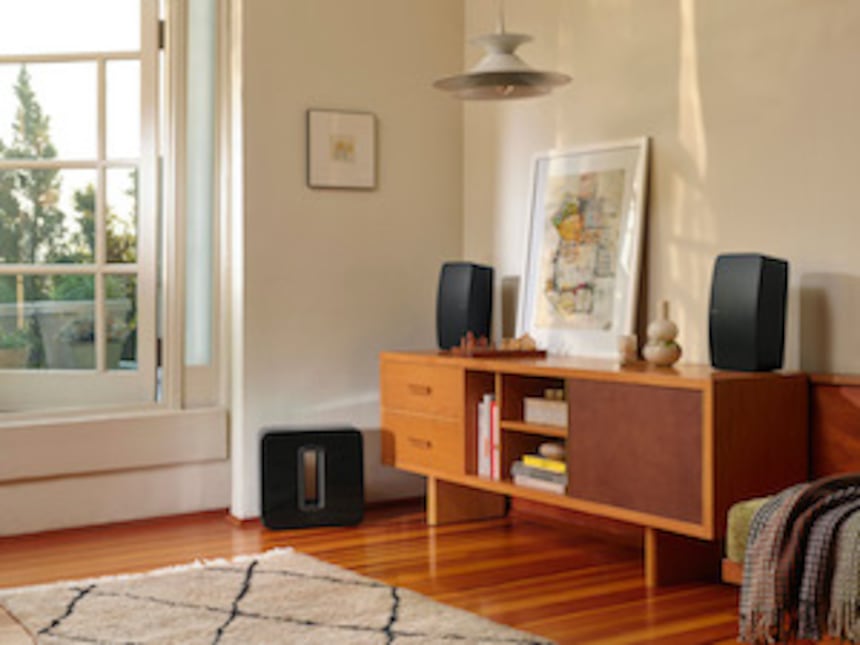
Features
● Price: see store
● Type Wireless stereo speaker
● Speakers: 3x tweeters + 3x woofers
● Power: 6x modules in class D
● Bandwidth: not specified
● Connectivity: Wi-Fi b/g, Ethernet 100 Mbps, 1x stereo mini-jack line input
● Compatibility with all Sonos S2 devices to create a multiroom network, AirPlay 2
● Dimensions (HxWxD): 203 x 364 x 154 mm
● Weight: 6.36 kg
Overview of the Sonos Five
The previous generation already featured two colours, black or white; however, the latter actually came equipped with a black front grille. The white version is now entirely white, including the grille and logo, making it more discreet for refined interiors. The black version is also monochrome.
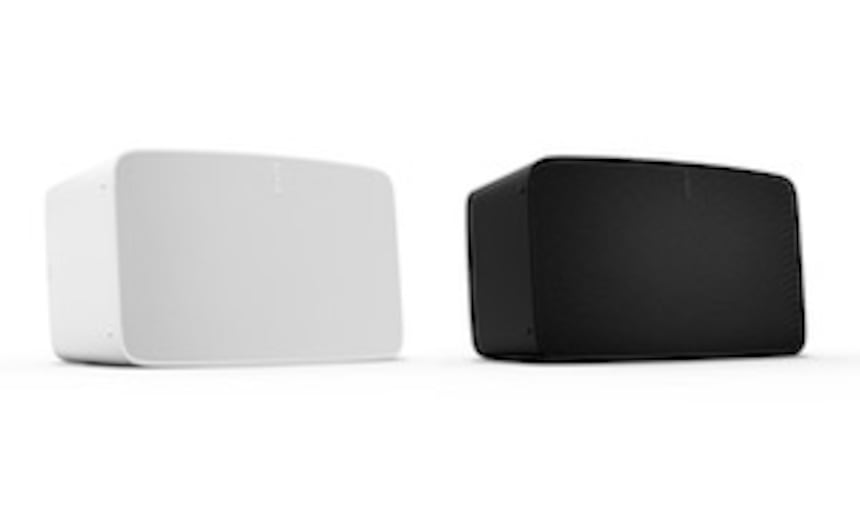
Standing horizontally on its mini rubber feet, the Five requires a little space around it to accommodate its 36cm width. The rounded sides give it a pleasingly timeless organic look, reinforced by the fact that everything is absolutely white. The mini feet positioned on three sides are thus almost invisible.
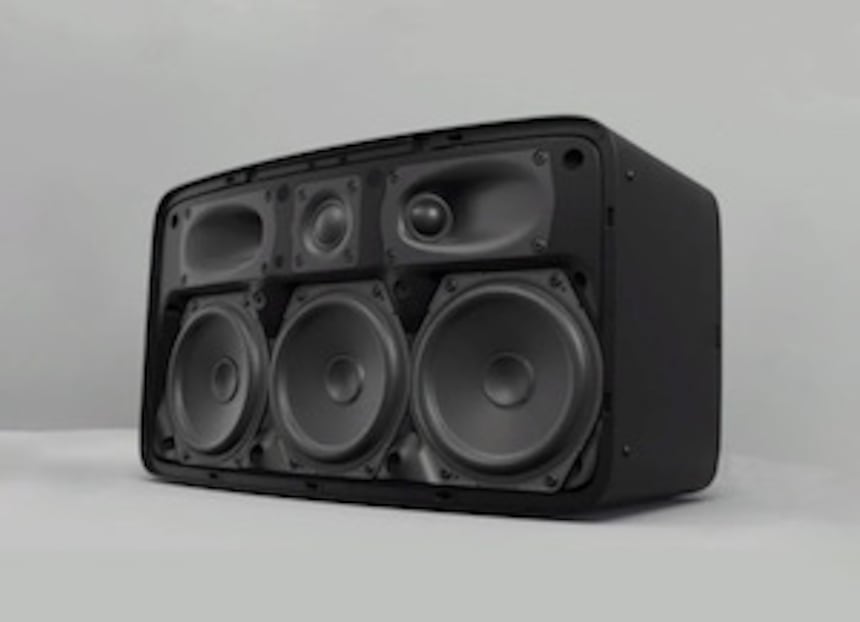
The metal grille on the front cannot be removed. It conceals six speakers positioned as follows: three woofers operating in closed mode at the bottom, three tweeters on top. The tweeters at the ends are precisely angled to enhance the stereo effect. Each loudspeaker has its own dedicated Class D amplifier channel. Sonos has not provided info on power.
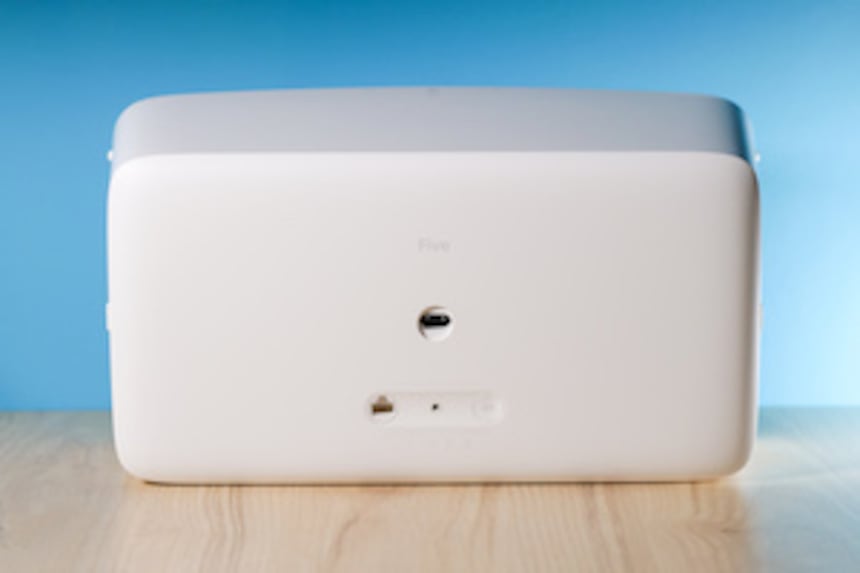
The rear side remains uncluttered, with a strip unifying the Ethernet jack, the auxiliary input mini-jack and the installation button. That set-up is very limited, given the competition offers optical input, subwoofer output or a USB port. Three touch-sensitive buttons on top of the Five control the volume, pause and resume playback, and navigating through songs. An indicator light indicates that the Five is plugged in and connected to the network, and can be turned off via the mobile app.
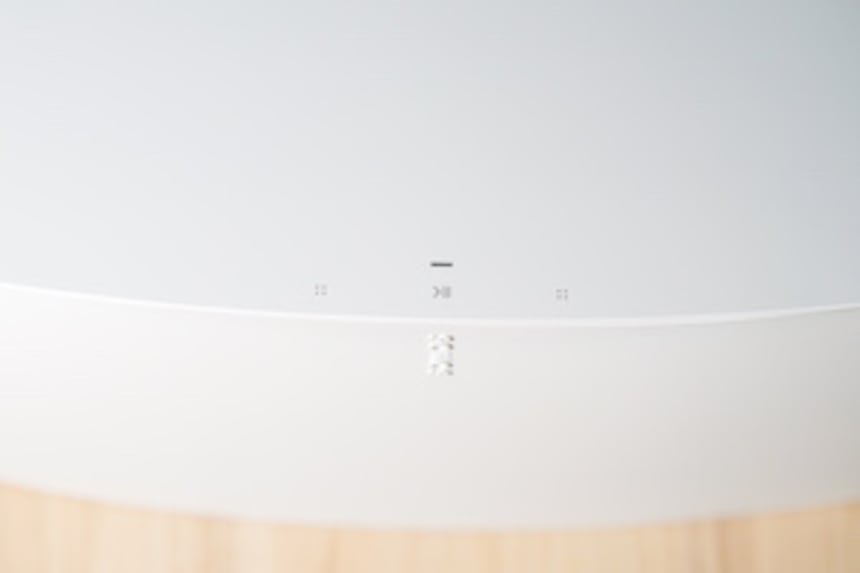
Operation of the Sonos Five
The Sonos app remains a prime example of user-friendly simplicity, especially for those uncomfortable with tech-packed products. Once the speaker is connected to the power, a flashing indicator light on top will indicate it is on standby. After downloading the Sonos application, go to settings, then system and select “add a product”. The Sonos Five is then immediately recognised if you are nearby. Skipping the unnecessary blather, the next few steps lead to installing and updating the speaker to its latest software version. The application then immediately offers to execute the automatic audio calibration, but only if you are using an iPhone, as this function is not available for Android. The Sonos Trueplay calibration uses the smartphone's microphone and obviously only recognises Apple.


To finish up the audio settings: apart from the calibration you have access to the bass and treble tone settings as well as loudness. Let's go back to the application home page, which provides quick access to recently released titles, playlists, web radio and podcasts. The second screen allows you to browse through your music. This is where you have to add Qobuz by entering your account credentials. Once Qobuz is selected, that content will be reorganised by Sonos. The first level lets you access your music, i.e. personal playlists, favourites and purchases. Then there are Qobuz playlists and recommendations via the “Discover” prompt. By selecting all the genres, you’ll find the usual offerings on the Qobuz app homepage: new releases, best sellers, most listened to, media favourites and Qobuz likes. Hey, all this tech may even change your listening habits… but that’s a small price to pay to have access to all this content.
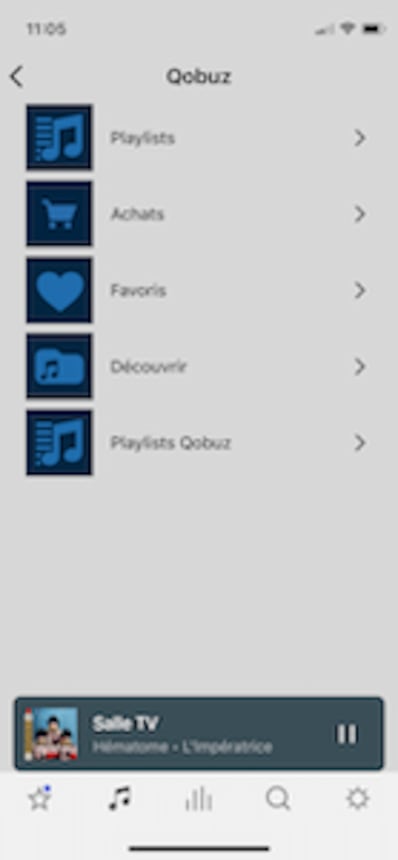

Next, the main screen takes you back to the current playback in each zone, as the power of Sonos is its multiroom performance, allowing you to listen to music in several areas of the house. This screen lists all your Sonos players, allowing you to switch between them or group them together. Finally, the last main screen features the search engine, allowing you to browse through Qobuz. For our listening session, we positioned the Sonos Five on a low cabinet and launched our usual Qobuz test playlists.


Listening session
By default, the sound is quite dark with the treble set back, and the centre is a trifle blurry. Vocals and instruments have the same breadth. The bass is already lively and properly adjusted. Don’t forget to deactivate the loudness, which is always on by default when installing a new Sonos speaker. It really is over-the-top, and in a normal-sized room the Five doesn't need it, even at lower volumes. After a little Trueplay calibration, the Five is finally liberated. The centre is taller and more precise, the instruments expanding into the aural space. The bass is little changed, but the treble is corrected, with greater precision in the decay of the notes. In Hématome, from the new album by L’Impératrice, the keyboard extends in an arc around the Five. The sound literally projects from the speaker. In tracks like this, the reverb literally explodes from the enclosure, which is the whole point of a one-piece stereo speaker: recreating a certain atmosphere from a single point, which of course consists of several speakers.

Listening to the astonishingly jazzy album Tone Poem by Charles Lloyd & The Marvels it offers a very interesting aural ambience. The soundstage even extends behind the speaker, while the tambourine takes up the front left, with excellent readability and timbre. The different instruments are well separated from each other with room to breathe. The bass is not as natural as with traditional speakers, whether bookshelf or column models. There is enough articulation that it doesn't seem too synthetic, but you can feel a sense of restraint, of control. That makes sense, as it allows the Five to rev up or shift way down while protecting the speaker. It’s an acceptable compromise for daily use, if not particularly appealing to the most dedicated audiophiles among us.
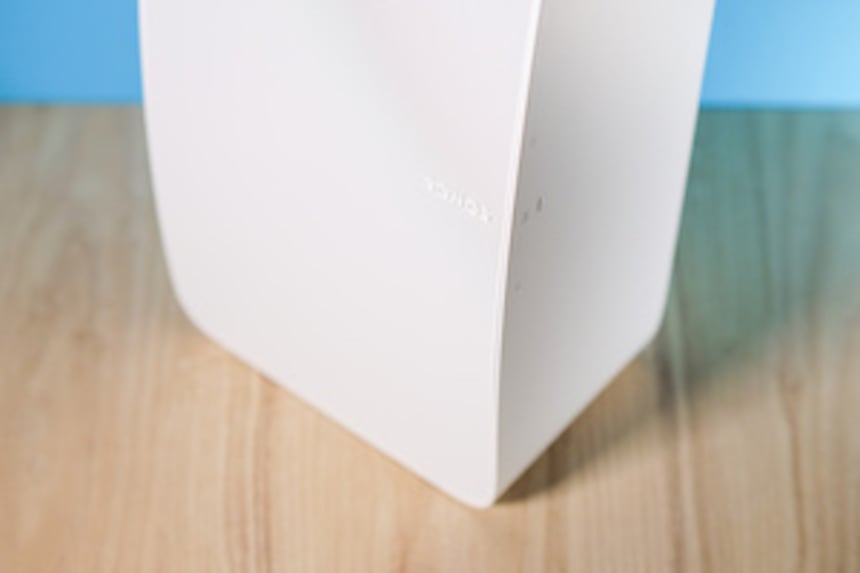
We finished up by listening in stereo because Sonos provided us with a pair of Fives. Setup using the system settings in the app takes just a few moments, after choosing the pair of Fives and indicating which is on the right. However, the app does not offer to recalibrate the Trueplay audio; you have to do it. Without calibration, the sound is dull, rather withdrawn, cut short at the ends of the spectrum. In addition, the pair of Fives must be positioned vertically rather than horizontally, requiring readjustment of the sound. Once that’s done, you’ve got reproduction very close to that of a classic hi-fi system. The soundstage is wide and stable with a good sense of depth. Vocals have the right presence and definition. The Trueplay has restored their brilliance in the higher notes. As for the bass, Jon Batiste’s latest album We Are confirms its strong presence. We’d little interest in the overamped loudness feature, which was deactivated. Bass is punchy and weaves a convincing ambience. However, we note a lack of articulation, with the pneumatic effect characteristic of hyper-controlled speakers. The other difference with a passive hi-fi speaker system is the range and breadth of the soundstage. It remains confined within the two Fives, while a pair of small, well-powered bookshelf speakers can open it outwards.
Pros:
The complete Sonos application
Excellent spatialisation for an all-in-one speaker
Bass register overflowing with vitality
Handles power well
Very similar to a hi-fi system in stereo pair mode
Cons :
Limited connectivity
Trueplay calibration on iPhone only
Conclusion
The Sonos Five is in competition with a number of models: Bluesound, Denon, Harman Kardon and Yamaha, featuring quite similar formats. Each brand has its own sonic signature, a constant in the hi-fi world, whether wired or wireless. The Sonos Five is perhaps the most adaptable, the most demonstrative, and the most attractive, although it doesn’t necessarily offer the highest fidelity. For enjoyment on a daily basis, it may suit your listening habits. The Trueplay automatic sound calibration system, allowing you to adapt playback to any room, is a major asset. Its complete application offers additional options to manage and fine-tune your music. In fact, listening in a stereo pair may prompt you to abandon your hi-fi system and all its separate parts. Offered at a similar price point, the pleasure is well worth the few compromises.